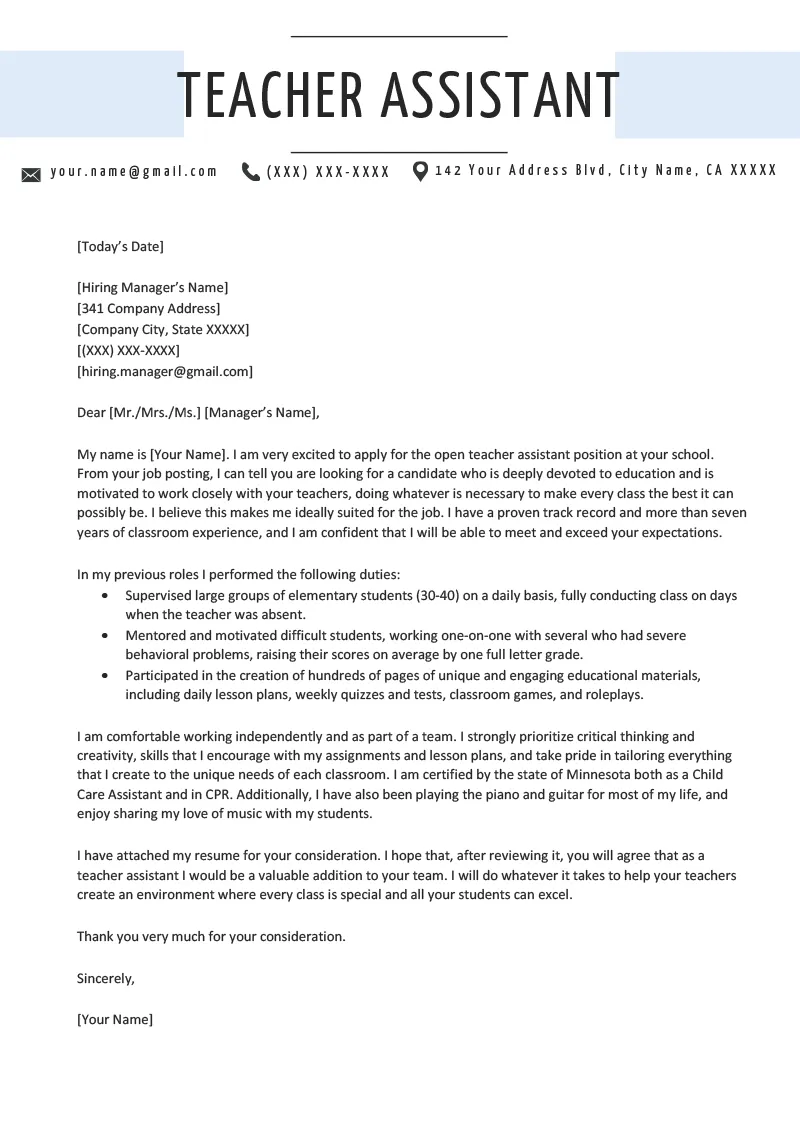Crafting the Perfect Teacher Cover Letter
A compelling teacher cover letter is your first introduction to a potential employer and a crucial step in landing your dream teaching job. It provides an opportunity to showcase your skills, experience, and passion for education, setting you apart from other candidates. A well-crafted cover letter complements your resume, offering a personalized narrative that highlights your key qualifications and demonstrates your suitability for the specific role. This guide provides you with the tools and strategies to create a cover letter that captures the attention of hiring managers and increases your chances of getting hired fast.
Highlighting Your Teaching Experience
Your teaching experience is the cornerstone of your cover letter. Clearly and concisely articulate your previous roles, the grade levels you’ve taught, and the subjects you’ve specialized in. Focus on the impact you’ve made in previous roles, providing specific examples of your successes and contributions to student learning. Instead of simply listing your responsibilities, emphasize achievements and quantifiable results that demonstrate your effectiveness as an educator. This section should paint a vivid picture of your professional journey, showcasing your growth, skills, and dedication to the teaching profession.
Quantifying Achievements in Your Cover Letter
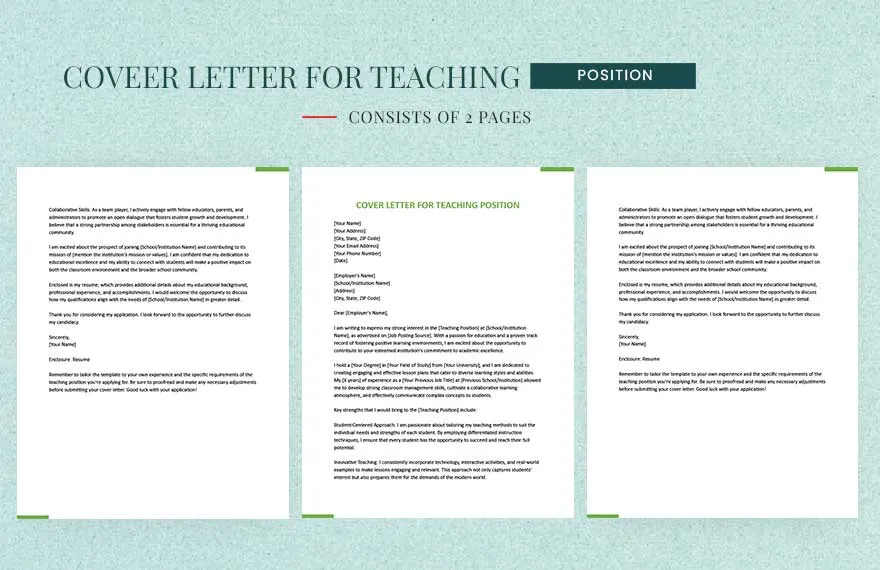
Use numbers and data to demonstrate the impact of your teaching. Instead of saying “Improved student test scores,” quantify it: “Increased student scores on standardized tests by 15% within one year.” Mention the number of students you’ve taught, the percentage of students who met their learning goals, or any other relevant metrics that show your effectiveness. Quantifiable achievements provide concrete evidence of your capabilities, making your cover letter more persuasive and memorable. Employers appreciate concrete evidence of your abilities, so include measurable accomplishments to showcase your success.
Showcasing Your Classroom Management Skills
Effective classroom management is essential for creating a positive and productive learning environment. Highlight your skills in this area by providing examples of how you’ve maintained a well-disciplined classroom, fostered positive relationships with students, and created an atmosphere conducive to learning. Describe specific strategies you’ve used, such as establishing clear expectations, implementing positive reinforcement techniques, and addressing behavioral issues effectively. Emphasize your ability to create a safe and supportive classroom where students feel comfortable taking risks and engaging in learning.
Emphasizing Your Relevant Skills
Besides your teaching experience, focus on the skills that make you an outstanding educator. Highlight your communication skills, your ability to differentiate instruction, your proficiency in using technology, and your ability to collaborate with colleagues and parents. Identify the skills that are most relevant to the specific teaching position you’re applying for and provide examples of how you’ve utilized these skills in the classroom to benefit your students. Tailor your cover letter to the job description by identifying and highlighting the skills that the employer is looking for, ensuring your application stands out.
Demonstrating Curriculum Development Expertise
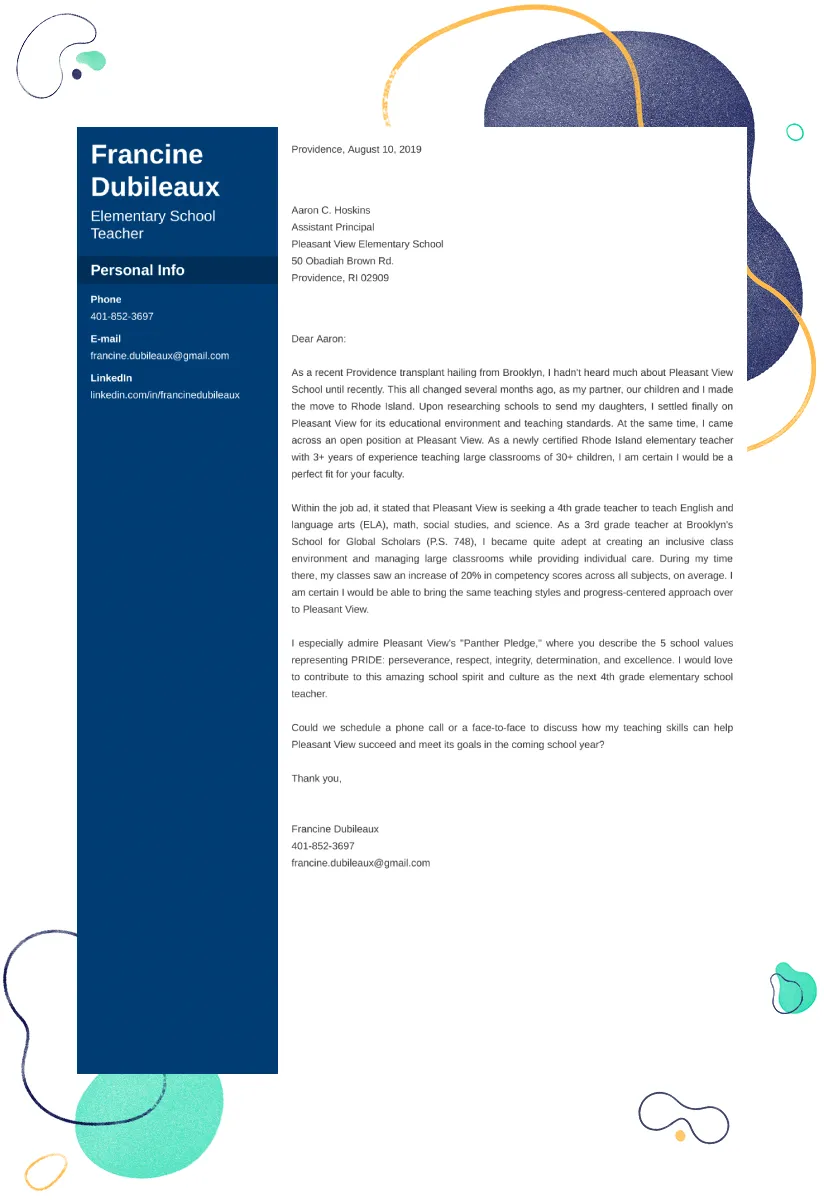
If you have experience developing curriculum, be sure to highlight this skill. Describe the curriculum development projects you’ve been involved in, the subjects you’ve created lesson plans for, and the learning objectives you’ve addressed. Emphasize your ability to align curriculum with state standards, create engaging and effective learning experiences, and assess student learning. Provide specific examples of successful lesson plans, innovative teaching strategies, or any other curriculum-related accomplishments that demonstrate your expertise.
Highlighting Experience with Diverse Learners
Teachers need to be adept at working with students from diverse backgrounds. Highlight your experience with students who have different learning needs, cultural backgrounds, and abilities. Describe any special education training you’ve received, and how you’ve adapted your teaching methods to meet the needs of all students. Provide examples of how you’ve fostered inclusivity in your classroom, and how you’ve celebrated diversity. This demonstrates your commitment to providing equitable learning opportunities for all students, which is highly valued by employers.
Structuring Your Cover Letter for Impact
The structure of your cover letter is as important as its content. Follow a clear and logical format that allows the hiring manager to quickly grasp your key qualifications. Start with a strong opening that immediately grabs the reader’s attention, followed by body paragraphs that highlight your teaching experience and skills. End with a compelling closing that reiterates your interest in the position and expresses your eagerness to discuss your qualifications further.
Opening with a Strong Hook
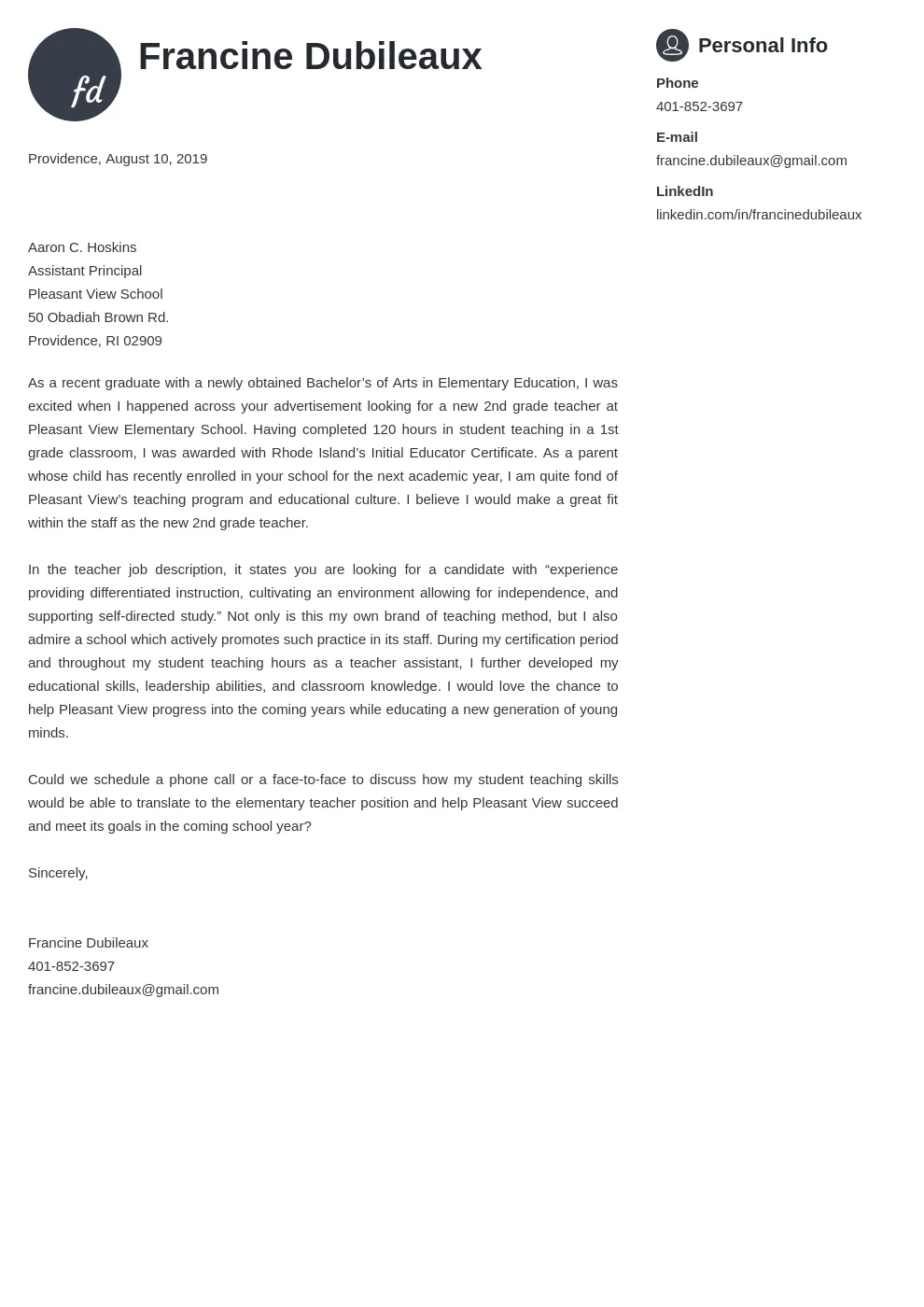
Your opening paragraph is your chance to make a memorable first impression. Start with a hook that captures the reader’s attention and clearly states why you are interested in the position and the school. This could be a brief statement about your passion for education, a personal anecdote that relates to the school’s mission, or a concise summary of your most relevant qualifications. Avoid generic openings and opt for something that demonstrates your enthusiasm, personality, and understanding of the school’s values.
Structuring the Body Paragraphs Effectively
The body paragraphs should provide details about your teaching experience, skills, and accomplishments. Each paragraph should focus on a specific aspect of your qualifications, using clear and concise language. Organize your paragraphs logically, using headings or bullet points to break up the text and make it easy to read. Use strong action verbs to describe your accomplishments and emphasize the impact you’ve made on student learning. Demonstrate a strong understanding of the school’s needs and how you can contribute to its mission.
Creating a Compelling Closing Statement
Your closing paragraph should reiterate your interest in the position and express your enthusiasm for an interview. Thank the hiring manager for their time and consideration, and provide your contact information. Highlight your key qualifications once more and reiterate your commitment to the school’s values. End with a confident statement that leaves a positive impression and encourages the reader to take the next step in the hiring process. A well-crafted closing reinforces your desire for the position and leaves a lasting impression.
Tailoring Your Cover Letter
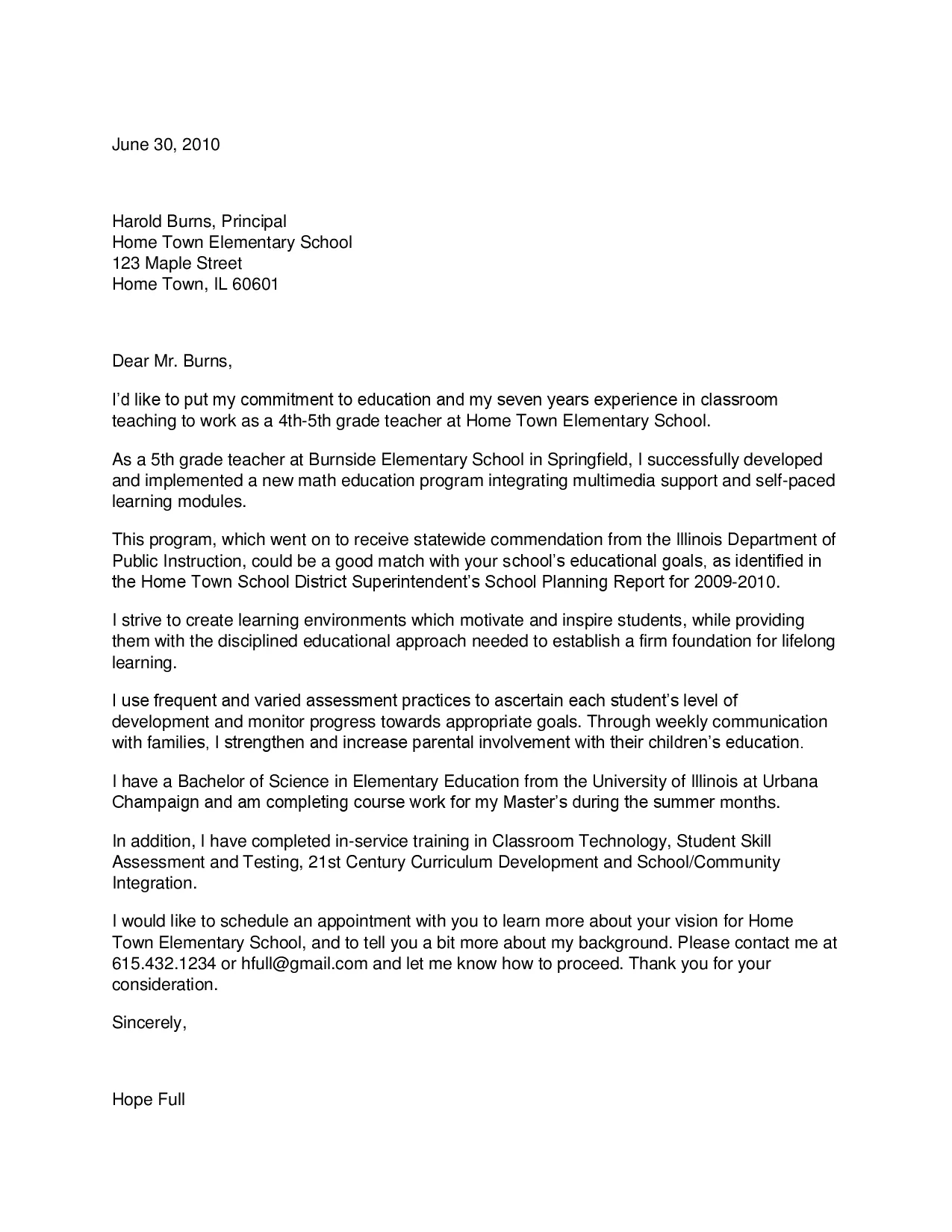
A generic cover letter is unlikely to make a lasting impression. Tailor your cover letter to each specific job and school you’re applying to. Research the school’s mission, values, and specific needs, and demonstrate how your skills and experience align with their goals. This shows that you’ve put in the effort to understand the position and the school, indicating your genuine interest. Tailoring your letter increases your chances of getting an interview.
Researching the School and Its Needs
Before writing your cover letter, research the school thoroughly. Visit the school’s website, read its mission statement, and learn about its values and programs. If possible, talk to current teachers or administrators to gain a better understanding of the school’s culture and needs. This research will enable you to tailor your cover letter to the school’s specific requirements, demonstrating that you are a good fit for their community. Understanding the school’s needs helps you position yourself as the ideal candidate.
Adapting Your Letter to Specific Job Requirements
Carefully review the job description and identify the key requirements. Tailor your cover letter to address these requirements directly, providing examples of how you’ve met them in your previous roles. Use keywords from the job description to show that you have the specific skills and experience the employer is looking for. This demonstrates that you understand the position and are qualified to perform the necessary duties. Adapt your letter to showcase your understanding of the role and your ability to excel.
Proofreading and Polishing Your Cover Letter
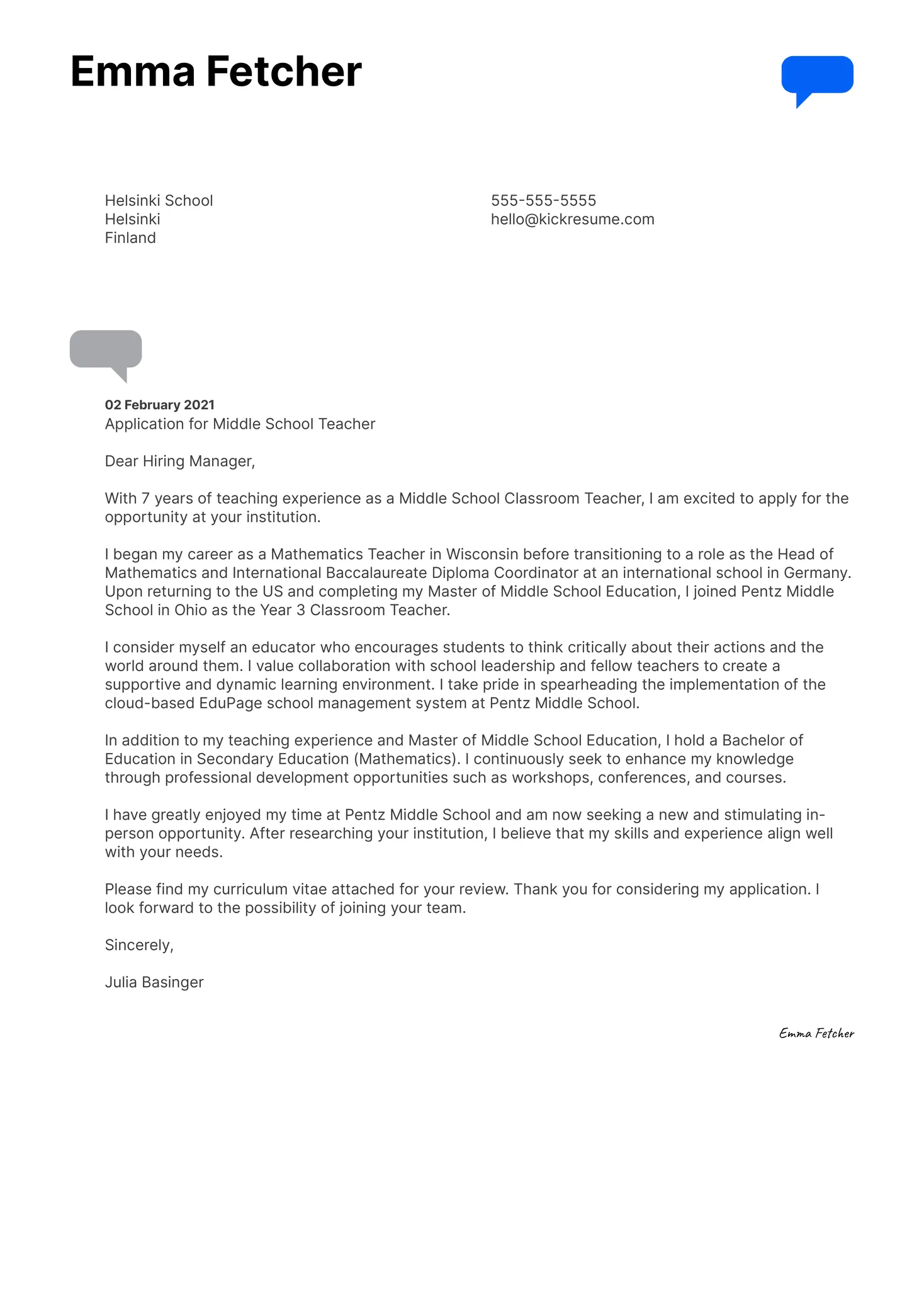
Before submitting your cover letter, proofread it carefully. A polished cover letter with no errors is essential for creating a positive impression. Sloppy errors can undermine your credibility, while a well-written, error-free letter demonstrates your attention to detail and professionalism. This final step ensures that your cover letter is a reflection of your capabilities as a teacher, presenting you in the best possible light. Take the time to refine your writing.
Checking for Grammatical Errors and Typos
Check your cover letter for any grammatical errors, spelling mistakes, and typos. Use a grammar checker tool, but don’t rely on it entirely. Read your cover letter aloud to catch any awkward phrasing or errors. It’s also a good idea to have a friend or colleague proofread your letter for a fresh perspective. Correcting errors boosts your professionalism and shows that you value quality in your work.
Ensuring a Professional Tone
Maintain a professional tone throughout your cover letter. Use formal language, avoid slang or colloquialisms, and address the hiring manager by name, if possible. Keep your tone positive and enthusiastic, while remaining respectful and courteous. Your cover letter should reflect your professional demeanor and your commitment to the teaching profession. This ensures your cover letter creates a favorable impression.
Finalizing Your Teacher Cover Letter
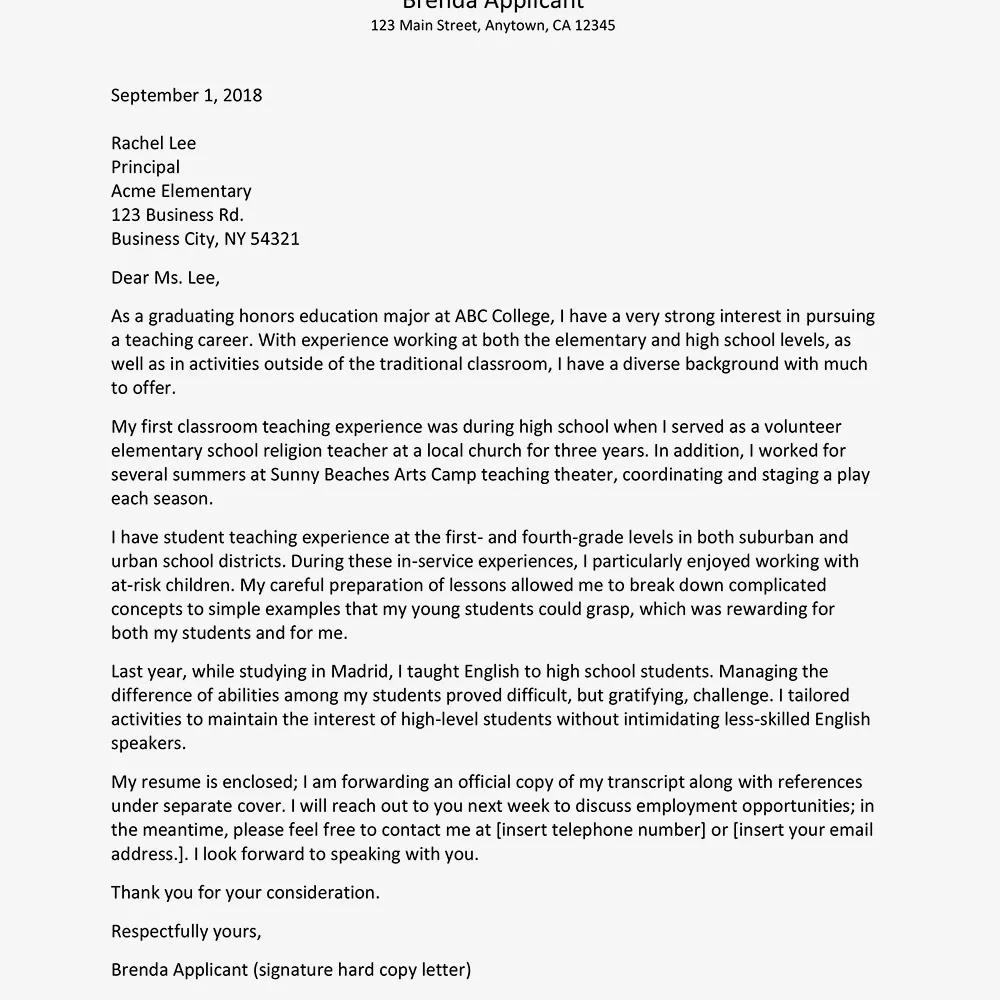
By following these guidelines, you can craft a teacher cover letter that highlights your experience, skills, and passion for education, increasing your chances of getting hired. Remember to tailor your letter to each specific job and school, proofread it carefully, and maintain a professional tone. With a well-crafted cover letter, you’ll be well on your way to landing your dream teaching job, so take the time to create a compelling and effective document that will get you noticed by potential employers.
